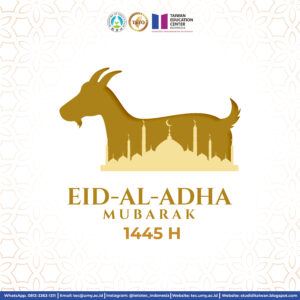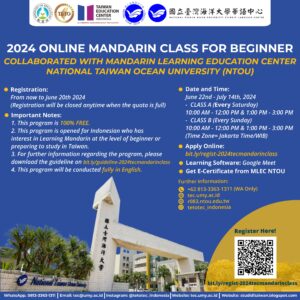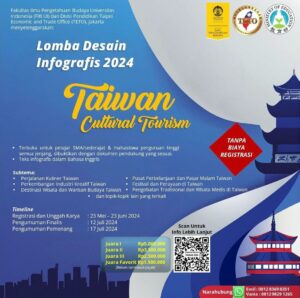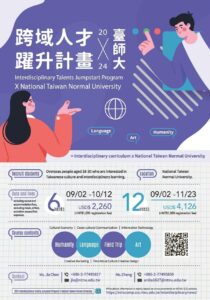1 Jan: Republic Day/New Year’s Day
(Republic Day is a public holiday in Taiwan on January 1st.While the holiday is also celebrated as New Year’s Day, it commemorates the foundation of the Republic of China on January 1st 1912.
The Wuchang Uprising of October 10th 1911, began the Xinhai Revolution which marked the end of the Ching (Qing) Dynasty that had been established in 1644 by the Manchus.Since the start of the nineteenth century the power and control of the Ching court had begun to decline and by the start of the twentieth century, China had become weak to Japanese and western influences. Discontent with this situation led to an uprising of nationalists under the leadership of Sun Yatsen.The revolt in Wuchang was successful and led to other uprisings breaking out in other cities across China.The fall of the Manchus swiftly followed and on January 1st 1912, the Republic of China was founded with the establishment of the Provisional Government in Nanking. Sun Yatsen was elected as provisional president of the new republic.The Xinhai revolution ended with the abdication of the six-year-old Last Emperor, Puyi, on February 12th 1912, marking the end of 2,000 years of imperial rule in China.
October 10th, the anniversary of the start of the uprising, is the National Day of Taiwan.Celebrations in Taiwan today are arguably as focused on the start of the international new year than on the events of 1912.)
23 Jan : Chinese New Year Holiday
24 Jan : Chinese New Year’s Eve
25 Jan : Chinese New Year’s Day
(Chinese New Year is the first day of the New Year in the Chinese calendar, which differs from the Gregorian calendar. It is also known as the Spring Festival or the Lunar New Year. Every year is represented by a zodiac animal sign.Chinese New Year is one of the largest public holidays in Taiwan.Even though Taiwan is not a part of mainland China, many of the Taiwanese people are from the Han ethnic group and speak Mandarin. They also adhere to many of the cultural customs of their mainland counterparts. While Chinese New Year, or the Spring Festival, is a large event in Chinese communities throughout the world, the holiday is quite extravagant in Taiwan. Chinese New Year is a public holiday according to legislation passed by the Taiwanese government.
Many Taiwanese people celebrate the Spring Festival with various traditional Chinese customs and traditions. Since Chinese New Year is one of the most vibrant holidays in Taiwan, all celebrations are oriented around having fun with family and friends.
- Dragon and Lion Dances
If you’re familiar with Chinese New Year celebrations in mainland China, you probably know that northern China celebrates the New Year with dragon dances and southern China use lion dances. In Taiwan, the dragon of the north and the lion of Canton are both used in Spring Festival celebrations. This is likely due to the fact that the first Chinese people to come to Taiwan were from various areas of China. This caused people to bring their family and regional customs to Taiwan. This represents the fact that Taiwan is a melting pot for Chinese cultures.
- Feasts
While many East Asian holidays are not oriented around food, the Chinese New Year feast is one of the most anticipated occasions in Taiwan. Prior to this event, family members, and sometimes friends, will gather in a central location to reunite after a year of work or schooling. Together, Taiwanese families will enjoy a large meal of traditional Chinese foods. Some of the most popular dishes include pork dumplings, rice, steamed fish, chicken, and noodles. This also proves that Taiwan consists of many different Chinese cultures. In mainland China, noodles are almost exclusively consumed in Beijing, Shandong, and other northern areas of China. Rice is the staple in the diets of people in Canton and southern China. While enjoying the feast with their family members, Taiwanese people only speak about positive subjects. Chinese traditions state that speaking about misfortune during the Spring Festival will bring poor luck throughout the upcoming year.
- Shopping
In Taiwan, many people purchase gifts for their friends and family members during the Spring Festival. The types of items gifted depends largely on age and significance of the recipient, but gifts are often practical. For example, a mother may gift cooking supplies to her adult daughter. Festival foods and crafts are also often purchased during the Spring Festival. All of the items are available in the many Chinese New Year markets that are established during the festival season.
Festivals
There are many Taiwanese festivals that allow people to celebrate certain aspects of the Spring Festival.
- In the northern Taiwan’s city of Pingxi, the Sky Lantern Festival is one of the most popular events. During this festival, thousands of Kongming, or flying paper lanterns, are released into the sky to send wishes to the gods. These lanterns are named after Zhuge Liang, a brilliant Shu strategist who fought Cao Cao during the Three States period of China. During his time, Zhuge Liang used the lanterns for military communication.
- Other major events in Taiwan include the Bombarding Master Handan Festival in Taitung and the Yanshui Beehive Fireworks Festival in Tainan.)
26-29 Jan: Chinese New Year Holiday
8 Feb: Lantern Festival
(The Taiwan Lantern Festival (Chinese: 臺灣燈會; pinyin: Táiwāndēnghuì) is an annual event hosted by the Tourism Bureau of the Ministry of Transportation and Communications in Taiwan to celebrate the Lantern Festival.
There are many activities all over Taiwan during Taiwan Lantern Festival. During the Taiwan Lantern Festival, thousands of sky lanterns light over Pingxi District (平溪) in Taiwan. In Yanshuei District, the firecrackers ceremony of the Wumiao Temple is also one of the important activities.[citation needed]. The Tainan Yanshuei Fireworks Display (“beehive of fireworks”) was originally celebrated to ward off evil and disease from the town. The Taipei Pingxi Sky Lanterns were released originally to let others know that the town was safe. These lanterns are decorated with wishes and images relating to the owner. These two events are known together as “Fireworks in the South, Sky Lanterns in the North.)
15 Feb: Make up Day for Lunar New Year Holiday
28 Feb: Peace Memorial Day
(228 Peace Memorial Day occurs on February 28th each year. The holiday is called 228 because of its translation into English from Chinese date format. In Mandarin, 228 is simply known as ererba (二二八). 228 Peace Memorial Day honors all of the people that were murdered by Kuomintang military forces on February 27, 1947.The number of Taiwanese deaths from the incident and massacre was estimated to be between 5,000 and 28,000. The massacre marked the beginning of the White Terror, in which tens of thousands of other Taiwanese went missing, died or were imprisoned. The incident is one of the most important events in Taiwan’s modern history and was a critical impetus for the Taiwan independence movement. The holiday is generally treated as a day of sadness and reflection.Each year, the President of the Republic of China leads a special ceremony that honors the people who were affected by the 228 Massacre and the White Terror period. After giving a memorial speech, the president bows to the families of the affected.
228 Peace Memorial Day is a Taiwanese holiday of reflection that acknowledges the sacrifices made by people during the White Terror period of Taiwan.)
29 Mar: Youth Day
(Taiwan Youth Day (TYD; Chinese: 台灣青年日) is a youth-oriented Catholic Church event in Taiwan, organized by Youth Desk of Chinese Regional Bishops’ Conference (CRBC). This holiday commemorates the victims of the Second Guangzhou uprising, also known as the Yellow Flower Mound revolt.The Second Guangzhou uprising was an uprising against the Qing Dynasty that occurred in April 1911. It was led by Huang Xing, a revolutionary leader who later became the first army commander-in-chief of the Republic of China. Most of the rebels were young people with all kinds of social background.The rebels realized that they were outnumbered, but they went into battle anyway. Most of them were killed during the uprising, which turned into a disastrous defeat. Only 72 bodies were identified. They are referred to as the 72 martyrs. The dead were buried in a mass grave on the Yellow Flower Mound.The uprising occurred on the 29th day of the 3d month in the Chinese calendar, which fell on April 27 in 1911. However, the Youth Day which commemorates this uprising is celebrated on the 29th day of the 3d month in the Gregorian calendar, that is March 29.Originally Taiwan celebrated its Youth Day on the same date as the People’s Republic of China, May 4, to commemorate the May Fourth Movement. But in 1954 the date was changed to March 29.)
2 Apr: Children’s Day Holiday
3 Apr : Tomb Sweeping Day holiday
4 Apr: Tomb Sweeping Day
(The Qingming or Ching Ming festival, also known as Tomb-Sweeping Day in English (sometimes also called Chinese Memorial Day or Ancestors’ Day), is a traditional Chinese festival observed by the Han Chinese of Mainland China, Taiwan, Hong Kong, Macau, Malaysia, Singapore, Indonesia, Thailand and by the Chitty of Malaysia and Singapore. It falls on the first day of the fifth solar term of the traditional Chinese lunisolar calendar. This makes it the 15th day after the Spring Equinox, either 4, 5 or 6 April in a given year.[4][5][6] During Qingming, Chinese families visit the tombs of their ancestors to clean the gravesites, pray to their ancestors, and make ritual offerings. Offerings would typically include traditional food dishes, and the burning of joss sticks and joss paper. The holiday recognizes the traditional reverence of one’s ancestors in Chinese culture.
The Qingming Festival has been observed by the Chinese for over 2500 years. It became a public holiday in mainland China in 2008. In Taiwan, the public holiday was in the past observed on 5 April to honor the death of Chiang Kai-shek on that day in 1975, but with Chiang’s popularity waning, this convention is not being observed. A similar holiday is observed in the Ryukyu Islands, called Shīmī in the local language. In mainland China, the holiday is associated with the consumption of qingtuan, green dumplings made of glutinous rice and Chinese mugwort or barley grass. A similar confection called caozaiguo or shuchuguo, made with Jersey cudweed, is consumed in Taiwan.)
4 Apr: Children’s Day
(Children’s Day is a commemorative date celebrated annually in honor of children, whose date of observance varies by country. In 1925, International Children’s Day was first proclaimed in Geneva during the World Conference on Child Welfare. Since then, it is celebrated on June 1 in most countries. Children’s Day is celebrated by the UN on November 20.Taiwan designated 4 April as Children’s Day, pursuant to Article 5 of the Order to Implement Commemoration Days and Holidays.[53] The holiday dates back to 1931 and since then schools often hold special activities in order to celebrate the occasion. Because of pressure from parents demanding to accompany their children in the celebration, Taiwan celebrated Women’s Day together with Children’s Day on 4 April 1991. Since then, 4 April has been known as “The Combined Holidays of Women’s Day and Children’s Day” (Chinese: 婦女節、兒童節合併假期). It has been a public holiday of Taiwan, ROC since 2011.)





